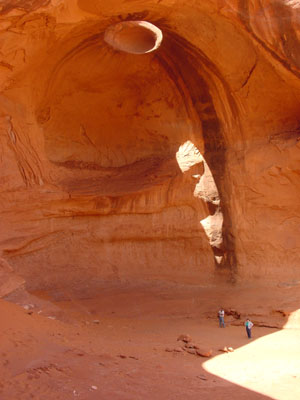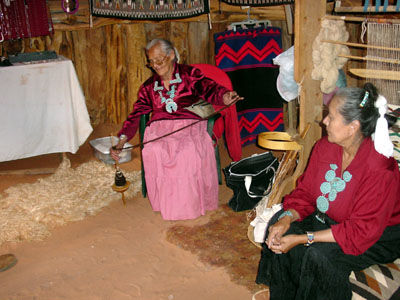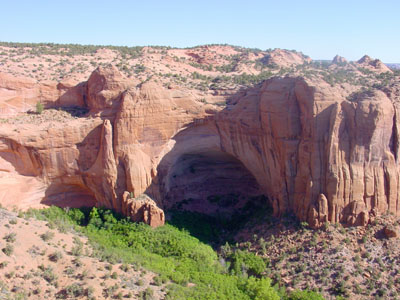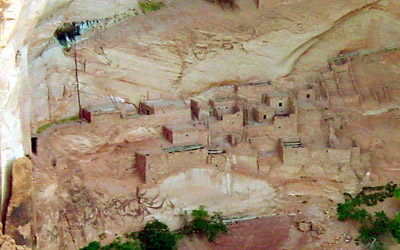
Into Navajo Land
May 27, 2002
May 27 - We headed south towards Arizona and the Grand Canyon.
Our route took us through the Navajo reservation. We stopped at the Navajo
Tribal Park Visitor Center and soon found ourselves signing up for a Navajo
guide led tour of Monument Valley. It was a bit pricey, but interesting
and it
did allow us to see some unusual rock formations up close and visit a hogan that
that we could not have seen without a Navajo guide.

Monument Valley is full of mesas, buttes, spires, and other
interesting rock formations.

An interesting arch that, when viewed from a certain angle, has an opening shaped like an eye. It is called, "Sun's Eye".

"The Hogan" is a huge alcove in a rock cliff. It is rounded like an
outdoor music shell and has a hole at the
top open to the sky, like a smoke hole for a hogan. Hence it is called,
"The Hogan". The acoustics inside it are excellent. Our guide played a
guitar in the "Hogan"; the sound was very rich and resonant, sort of
like singing in the shower.

We also visited a real hogan. The navajo ladies inside demonstrated the process of taking wool and making yarn. The woman on the right combed the wool to align the fibers and remove debris. Then the grandmother took the combed wool and starting spinning it into yarn. But, instead of a spinning wheel, she used a simple spindle and worked the yarn by spinning the spindle with her right hand while controlling the tension with her left hand.

After the Navajo tour we headed on to Navajo National Monument to camp for
the night. Despite its name, it has no connection with the Navajo Nation, except
to be surrounded by it. We went there because: 1) it is on the way to Grand
Canyon, and 2) it has a free campground. (I am not averse to camping for free.)
We found it to be a very delightful place. The main feature of attraction is the
Betatakin Ruins, which are the remains of a village of pueblo-like
dwellings in an alcove in the side of the Betatakin canyon wall. According to
archeological studies, the village was populated by about 100 - 125 people from
about 1250 A.D. to about 1300 A.D. The tribe that lived there is called the
Anasazi, which is a Navajo name for "ancient other people". The
Hopi indian tribe, which has a reservation about 50 miles south, claim the
Anasazi as their ancestors, since a drawing on one of the walls looks
surprisingly like one of their ancient symbols.

A telephoto view of the Betatakin Ruin inside the alcove.
Next stop - Grand Canyon National Park.